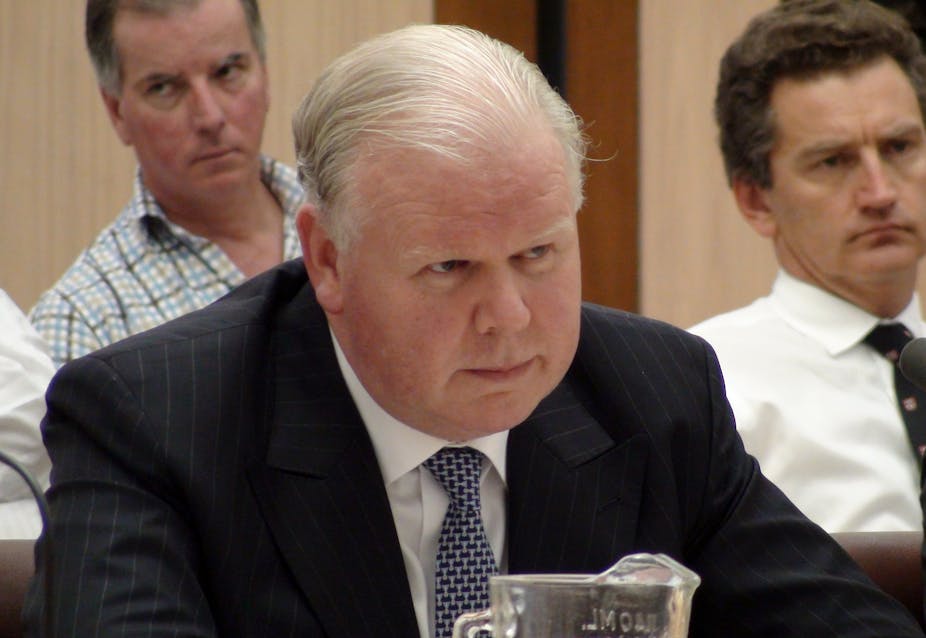ANZ Bank’s alleged manipulation of the bank bill swap reference rate (BBSW) is Australia’s version of the LIBOR debacle.
The workings of BBSW, like LIBOR, make for a very complex story. BBSW is similar to LIBOR (London Interbank Offer Rate), in that it’s used to set rates on hundreds of trillions of dollars (yes, hundreds of trillions) worth of transactions, including interest rates on credit cards, student loans and mortgages.
Banks also use the swap rate to determine the cost of borrowing from one another. It is the primary interest rate benchmark in the Australian financial market, and in Australia in 2014-15, was a market worth some A$1.7 trillion. The Australian Securities and Investment Commission (ASIC) is alleging that by nudging rates, ANZ has been able to make illicit profits.
With LIBOR, evidence emerged that banks were behaving like a cartel, and the practice of rigging rates was very much one of business as usual, with senior management in on the deal. After the LIBOR rigging was uncovered in the US, Barclays CEO Bob Diamond, and Chairman Marcus Aguis both resigned.
The rigging by ANZ allegedly happened while former CEO Mike Smith was in charge. ASIC has already managed to impose penalties against Royal Bank of Scotland (A$1.6 million), UBS, and BNP Paribas (A$1 million) for BBSW manipulation. Although of course, these penalties are small change compared to the billions of dollars in fines imposed abroad.
The broader impact
If ASIC’s action against ANZ is successful, this would represent evidence of very serious failures in compliance and risk management at the bank – the same things which led to the global financial crisis, and for which taxpayers are, ultimately, on the hook. This is what really makes the situation totally unacceptable, and morally repugnant: ultimately it is not shareholders who lose out from this kind of misconduct, it is taxpayers. It is for this reason that we are completely reliant on ASIC and the Australian Prudential Regulation Authority (APRA) to put a stop to this kind of misconduct.
And why, if in the UK the LIBOR scandal contributed to the dissolution of the Financial Services Authority, has ASIC remained unaffected? Chairman Greg Medcraft has implored banks involved in the scandal to plead guilty, but a firmer hand is needed.
The truth is ASIC should have been all over this issue years ago, even if only as a follower. For example, in the UK the Wheatley Report of 2012 called for the criminalisation of rate rigging. Why did ASIC not take its cue from LIBOR and Wheatley?
Nor have the regulators taken a cue from the Monetary Authority of Singapore. In June 2013 the MAS slugged 20 banks with massive increases in statutory reserves for market manipulation. If ASIC cannot get what it needs in court, it could secure co-operation from APRA to increase regulatory capital from banks that have evidenced conduct risk. Isn’t that the point of Australia’s Council of Financial Regulators?
BBSW if widespread is not just market manipulation. It has the potential to become systemic risk, and should rightly, therefore, attract higher regulatory capital for the banks involved.
As Pat McConnell rightly points out, ASIC should move on the issue of people risk, cultural risk, or conduct risk. APRA Chairman Wayne Byers has resorted to jawboning banks instead of slugging them with higher regulatory capital requirements. Instead he should consider the example of the PPI scandal in the UK. There the regulator actually took up the cudgels, and the result was recompense to some 20 million customers.
ASIC defines conduct risk as:
“the risk of inappropriate, unethical or unlawful behaviour on the part of an organisation’s management or employees.”
BBSW rigging is an example of conduct risk writ large.
The BBSW, insurance and financial planning scandals being uncovered in Australian banking potentially affect millions of Australians.
Claimants, such as those who sued Barclays in the US, could encompass anyone whose loan interest rates may have been affected by this fraud: private individuals, corporations, government, non-profits, universities, and other banks.
If ASIC succeeds in its action against ANZ this could open the floodgates of litigation against ANZ and any other bank that has been complicit. Maurice Blackburn Lawyers is threatening a class action against ANZ. Maybe this type of litigation will succeed where our regulators have been unable to.

